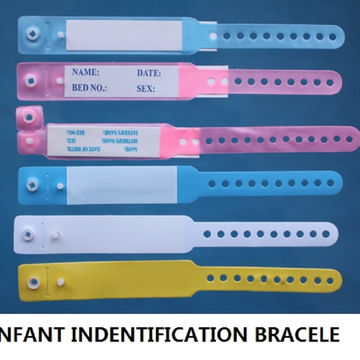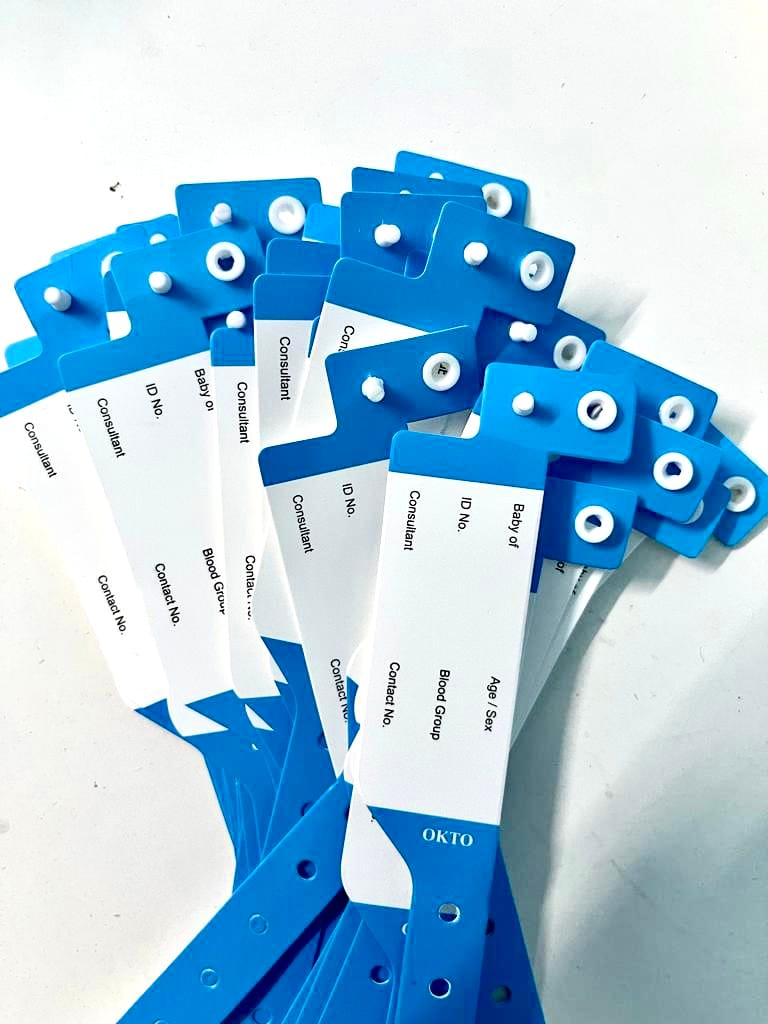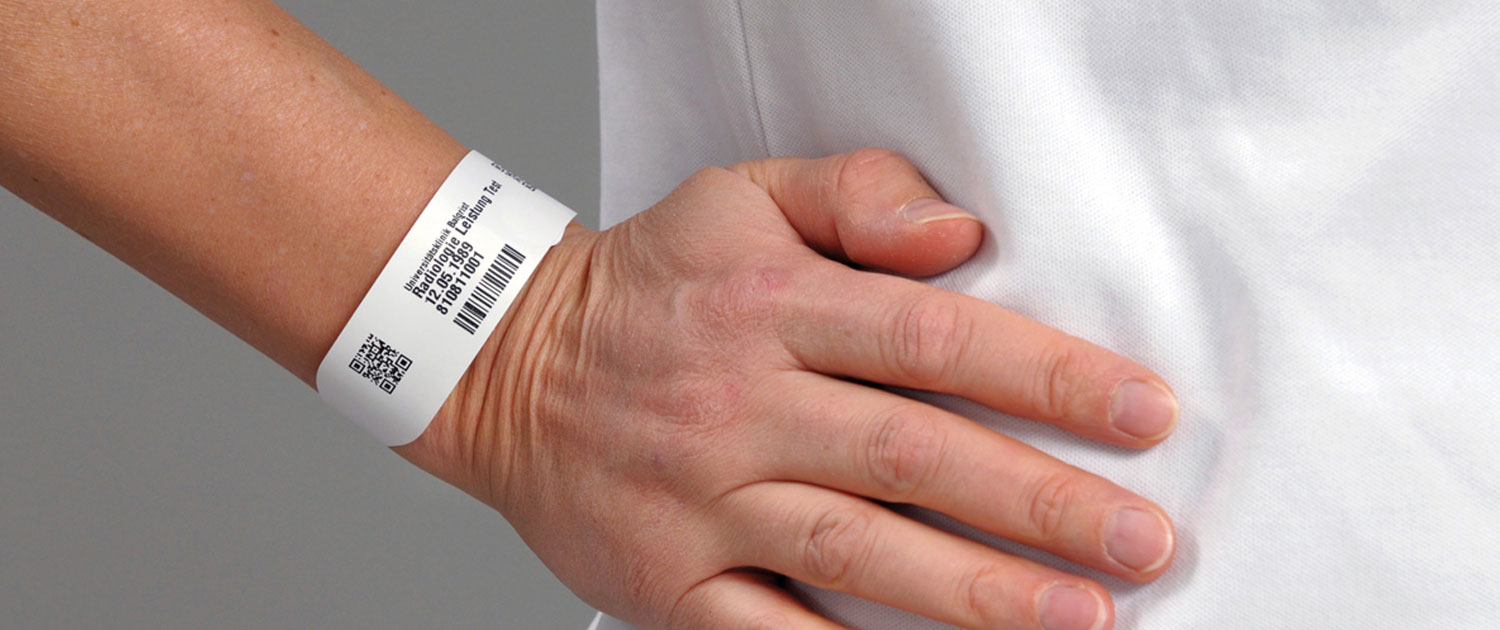Enhancing Security: The Importance of Person Recognition Bands in Health Care
In the world of health care, the efficacy of client recognition bands can not be overstated, as they work as a basic safeguard against misidentification and succeeding mistakes. These bands, typically forgot, include crucial details that is vital for guaranteeing patient security and ideal therapy outcomes. Nevertheless, the application of reliable recognition procedures postures numerous challenges that doctor need to navigate. As we discover the multifaceted role of these bands, it becomes evident that their importance expands beyond simple identification, questioning concerning finest practices and future developments in patient safety.
Overview of Person Recognition Bands
Client identification bands play an essential duty in ensuring the safety and precision of individual care in medical care setups. These bands, usually endured the wrist or ankle, work as an essential device for verifying patient identification, therefore decreasing the danger of errors in therapy, medication management, and various other health care procedures. Made from sturdy products, person identification bands often consist of necessary info such as the client's name, date of birth, clinical document number, and barcodes or QR codes for scanning.
The execution of client identification bands is vital in different healthcare environments, consisting of medical facilities, outpatient centers, and long-term care institutions. They contribute to a methodical approach in person administration, allowing medical care specialists to rapidly and properly determine clients, particularly in high-pressure scenarios where swift decision-making is necessary.
In addition, using these bands is lined up with regulative criteria intended at improving individual security - Patient Identification Band. By making sure that each person's details is conveniently proven and conveniently obtainable, doctor can preserve a high requirement of care, lower the occurrence of negative occasions, and promote a culture of security within healthcare institutions
Benefits of Accurate Recognition
Exact recognition is essential to improving person safety and security and care top quality in health care settings. It offers as the initial line of protection versus errors that can bring about negative client outcomes. By ensuring that each person is appropriately determined through reliable methods, such as patient recognition bands, health care companies can considerably decrease the danger of misidentification, which can result in unacceptable therapies, medication mistakes, and even medical mix-ups.
Additionally, precise person identification promotes efficient interaction amongst healthcare groups. When all team member can regularly recognize individuals, they can share crucial information extra effectively, leading to much better control of care. This is specifically essential in emergency situation scenarios where timely treatments are essential.
In addition, precise recognition supports conformity with regulatory criteria, thus lowering the risk of legal effects for healthcare centers. It fosters count on between individuals and health care providers, as patients really feel more safe and secure recognizing that their identities are being guarded.

Typical Difficulties Faced
Making certain efficient patient recognition in health care setups provides a series of difficulties that can compromise safety and security and care top quality. One significant obstacle is the variability in person populations. Individuals may get here in a state of confusion or distress, making precise recognition tough. Furthermore, language obstacles can prevent effective interaction, making complex the verification procedure.
One more obstacle is the reliance on human consider identification procedures. Medical care professionals may unintentionally misinterpret or neglect why not look here recognition methods, particularly in high-stress environments such as emergency departments. This can cause mistakes, consisting of the management of wrong treatments or medications.
Technological issues also position difficulties. Although digital wellness document (EHR) systems are made to streamline patient identification, system outages or user mistakes can interfere with the process. The physical style of client ID bands can lead to readability issues, especially in instances where bands are harmed or obscured.
Lastly, inconsistent training amongst personnel relating to identification protocols can cause spaces in understanding and practice. Resolving these obstacles is vital for improving patient safety and security and making sure that recognition bands serve their designated purpose efficiently.
Best Practices for Execution
To successfully execute patient recognition bands in health care settings, companies should take on a diverse approach that focuses on training, standardization, and modern technology assimilation. Standardization includes developing clear procedures for the layout, application, and use recognition bands across all divisions. This guarantees consistency and decreases the danger of mistakes linked to variations in band kinds or identifying approaches.


Training is check crucial for all health care staff to guarantee they understand the importance of precise client recognition, exactly how to properly review and apply recognition bands, and the procedures to adhere to in instance of inconsistencies. Regular workshops and correspondence course can enhance this knowledge and promote a society of security.
Modern technology combination plays a crucial function in boosting the effectiveness of person identification bands. Using barcode scanning or RFID technology can enhance the recognition process, permitting real-time confirmation of client identifications. Additionally, electronic wellness document systems should be set up to include notifies for mismatches between the recognition band and person data.
Future Trends in Client Security
As medical care continues to develop, the emphasis on person security is likely to magnify, driven by improvements in modern technology and a greater understanding of systemic risks. Emerging patterns show a change in the direction of more integrated systems that leverage data analytics, man-made knowledge, and equipment learning to enhance patient recognition processes. These modern technologies can assist determine prospective security concerns prior to they intensify, consequently lowering mistakes linked with misidentification.
In addition, the application of blockchain innovation may transform exactly how patient data is safely shared among health care suppliers, making sure that recognition bands are regularly precise and updated. This will not only enhance patient safety and security but likewise help with seamless communication across multidisciplinary groups.

On top of that, the growing concentrate on customized medicine is anticipated to affect patient safety and security procedures. By integrating demographic and genetic information right into recognition systems, medical care professionals can customize treatments better, lessening the risks of damaging responses as a result of misidentification.
Final Thought
In final thought, patient recognition bands function as an essential element in boosting safety and security within health care atmospheres. By helping with precise client identification, these bands considerably decrease the danger of errors connected with misidentification, unsuitable treatments, and medicine administration. In spite of difficulties in implementation, adherence to finest techniques and the assimilation of arising innovations can further enhance their performance. Ultimately, the ongoing focus on robust identification protocols will certainly add to enhanced individual outcomes and general safety and security in health care setups.
In the world of medical care, the efficacy of client identification bands can not be overemphasized, as they offer as a basic guard against misidentification and succeeding mistakes.Person recognition bands play a vital role in making sure the safety and precision of client care in health care setups. Made from sturdy materials, client recognition bands often include vital information such as the client's name, date of birth, clinical record number, and barcodes or QR codes for scanning.
By guaranteeing that each person is properly identified through reliable means, such as individual identification bands, medical care service providers can dramatically minimize the risk of misidentification, which can lead to unsuitable treatments, drug errors, and Discover More Here even medical mix-ups.
In conclusion, person identification bands offer as an essential part in boosting safety within medical care settings. Patient Identification Band.